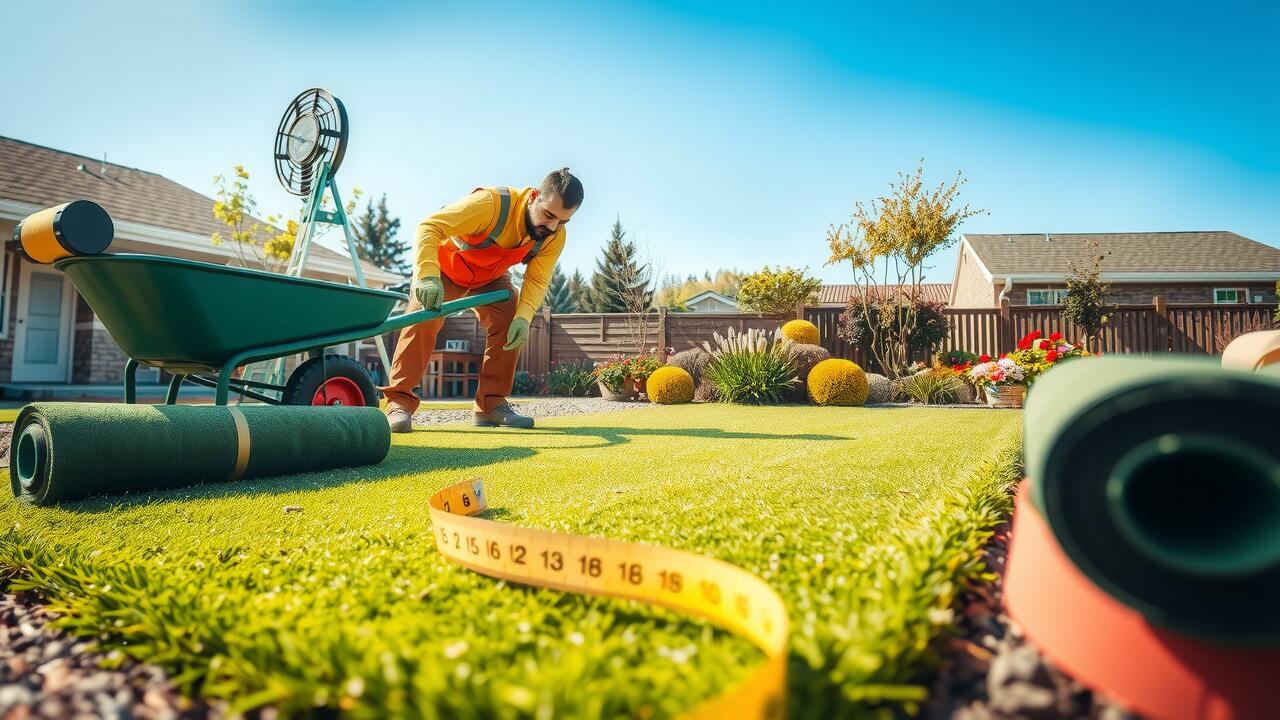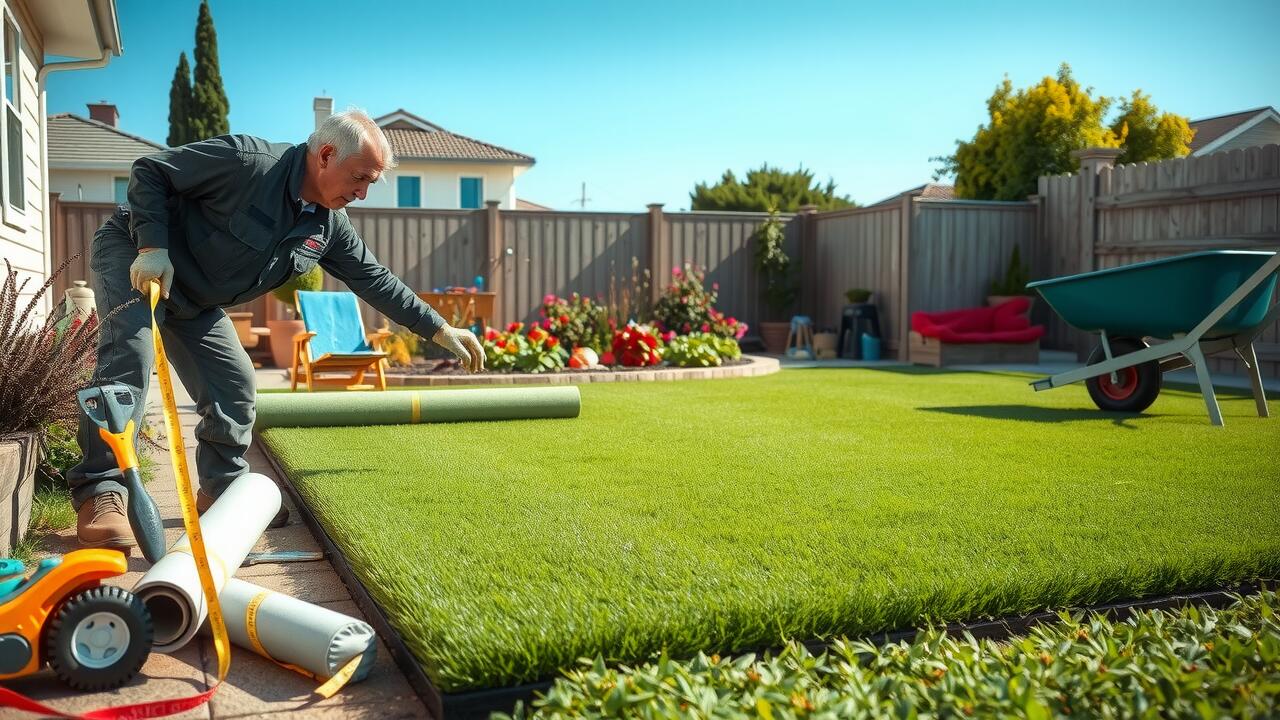
Seasonal Pricing Variations
Seasonal fluctuations significantly impact the price of turf, making it crucial for buyers to be aware of the timing of their purchase. Generally, demand peaks during the spring and early summer months, as homeowners and businesses look to enhance their outdoor spaces. This increased demand can lead to higher prices for both materials and turf installation services. Conversely, purchasing turf in the fall or winter months often results in better deals as suppliers aim to clear out inventory before the colder weather sets in.
Another factor influencing pricing is the market’s competitive dynamics, which can vary seasonally. During peak seasons, turf installers may charge more due to their busy schedules and increased labor costs. In contrast, off-peak times might offer lower rates as installers seek to maintain a steady workflow. Customers can capitalize on these seasonal variations by planning their turf installation projects strategically, ensuring they secure the best possible pricing throughout the year.
When to Buy Turf
Timing can significantly influence the cost and availability of turf. Generally, the best time to purchase turf is during the spring and early fall. These seasons are optimal for turf installation as temperatures are mild, allowing for better rooting and establishment. Many suppliers offer sales during this time, making it a financially savvy choice for homeowners and landscapers alike.
Purchasing turf during the off-season, such as mid-winter or peak summer, may result in higher prices and limited selection. Additionally, installation during extreme weather can stress the sod, leading to poor growth or an increased need for maintenance. Monitoring local market trends and planning purchases around favorable conditions can lead to a healthier lawn and a more economical overall investment.
Comparing Natural and Synthetic Turf
Natural turf offers a lush, green aesthetic that is often preferred for its natural feel and environmental benefits. It requires regular maintenance, including mowing, watering, and fertilization. Natural grass can be affected by weather conditions, which may lead to increased costs during droughts or heavy rains. Turf installation for natural grass also demands specific seasonal considerations to ensure successful growth.
Synthetic turf, on the other hand, provides a low-maintenance alternative that remains vibrant year-round. It eliminates concerns about water usage and pests while providing a durable playing surface. The initial turf installation costs may be higher, but long-term savings on maintenance can make it a cost-effective option. The choice between natural and synthetic turf ultimately depends on individual preferences, environmental considerations, and budget constraints.
Pros and Cons of Each Type
Natural turf offers a sense of authenticity and a natural aesthetic that many homeowners desire. It provides a soft surface that is conducive to activities like playing and lounging. Its ability to absorb heat can also contribute to a cooler environment in summer months. However, natural grass requires regular maintenance, including mowing, watering, and fertilizing, which can increase long-term costs. Additionally, natural turf is susceptible to pests, disease, and harsh weather conditions that may affect its appearance and health.
Synthetic turf has gained popularity due to its low maintenance requirements. With synthetic grass, there is no need for mowing or frequent watering, resulting in lower upkeep costs over time. It can withstand heavy foot traffic without becoming damaged and retains its vibrant appearance year-round. Yet, the initial investment for turf installation can be significantly higher compared to natural grass. Some individuals also express concerns about the environmental impact of synthetic materials and the potential heat retention during hot weather.
Regional Price Differences
Regional variations in pricing for turf installation can significantly affect overall costs. Different areas may have varying availability of turf products, local market demands, and transportation costs that can impact pricing. Urban regions might experience higher prices due to increased demand and a larger consumer base, while rural areas may benefit from more competitive rates.
Additionally, climate plays a role in determining the types of turf that are most suitable for specific locations. For instance, regions with warmer temperatures may lean towards heat-resistant options, influencing the types of synthetic or natural turf available. Local suppliers might adjust their prices based on the popularity of certain styles of turf or specific installation practices favored by landscapers in that area.
How Location Affects Costs
The cost of turf installation can vary significantly based on geographic location. Urban areas often see higher prices due to increased demand, elevated labor costs, and potential transportation fees for materials. In contrast, suburban and rural regions may offer more competitive pricing due to lower operational expenses and a more abundant supply of local resources. Understanding these regional dynamics is essential for budget planning.
Climate also plays a crucial role in determining turf costs. Regions with extreme weather conditions may require specialized turf varieties that can withstand drought or excessive moisture. This can lead to higher upfront costs for both the turf material and the installation process. Homeowners should consider these factors when evaluating the overall cost of turf installation in their specific locality.
FAQS
How much does 2000 square feet of natural turf cost?
The cost of 2000 square feet of natural turf can vary based on the type of grass and your location, but it generally ranges from $400 to $2,000, including installation.
What is the cost of 2000 square feet of synthetic turf?
Synthetic turf can cost between $2,000 and $10,000 for 2000 square feet, depending on the quality of the material and installation fees.
Are there seasonal pricing variations for turf?
Yes, prices can fluctuate based on the season. Turf is often cheaper in the fall and winter months, while prices may increase in the spring and summer due to higher demand.
How do regional differences affect the price of turf?
Turf prices can vary significantly by region due to factors like local labor costs, turf availability, and climate conditions that influence the type of grass or turf that grows best.
What factors should I consider before purchasing turf?
Before purchasing turf, consider factors such as the type of turf (natural vs. synthetic), your budget, local climate, maintenance requirements, and the intended use of the space (e.g., lawn, sports field, or decorative landscaping).
